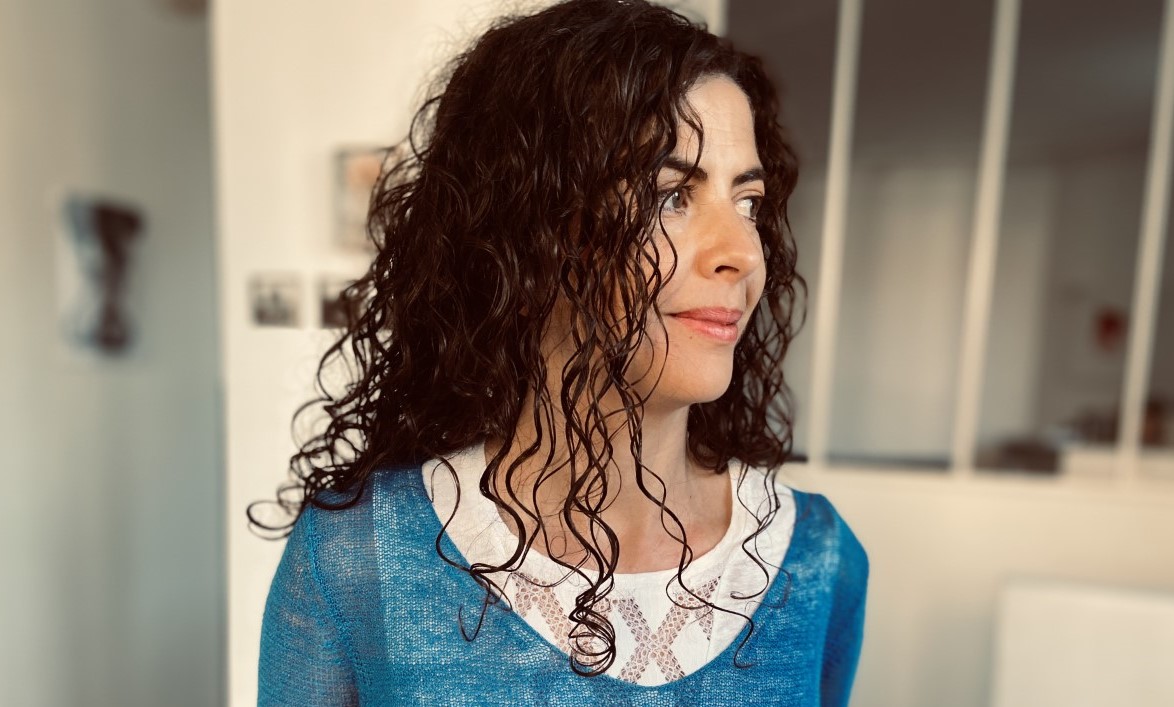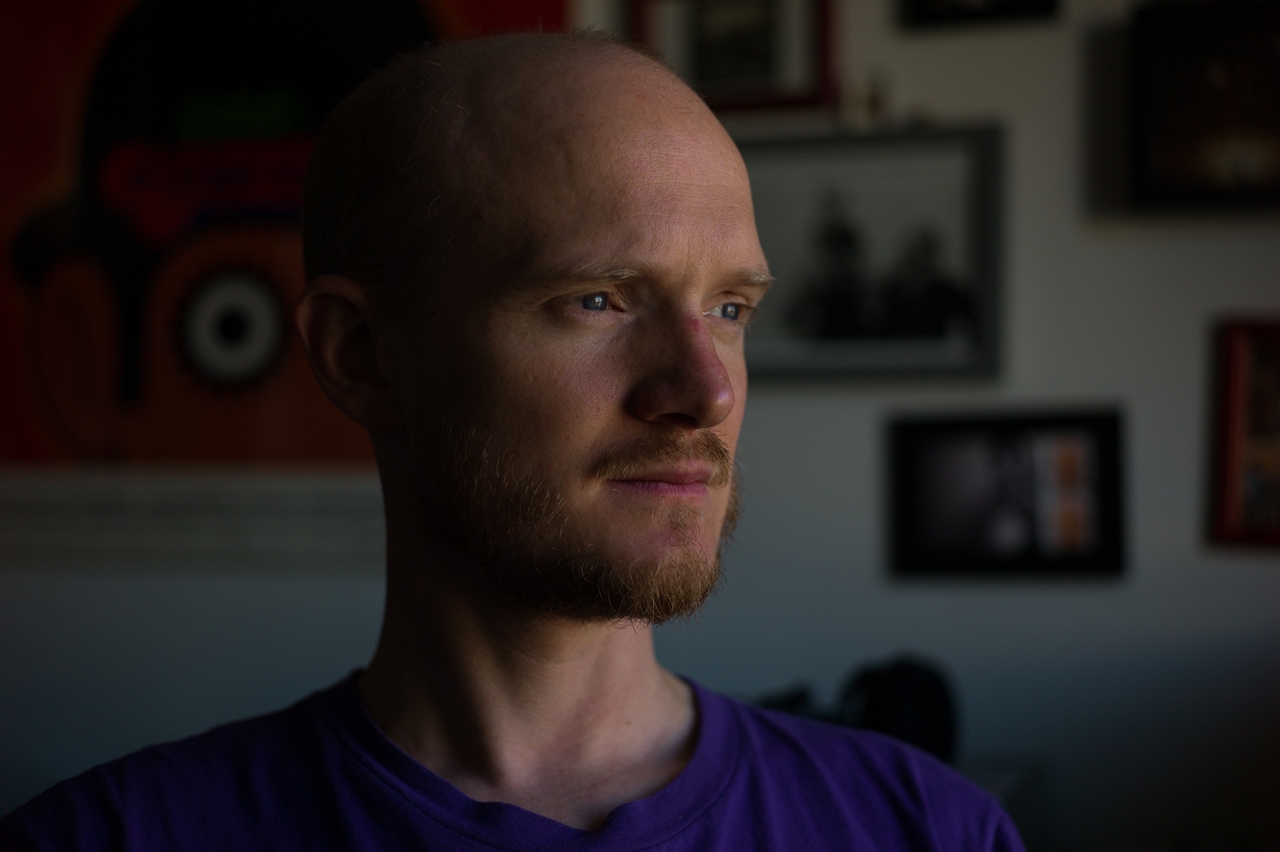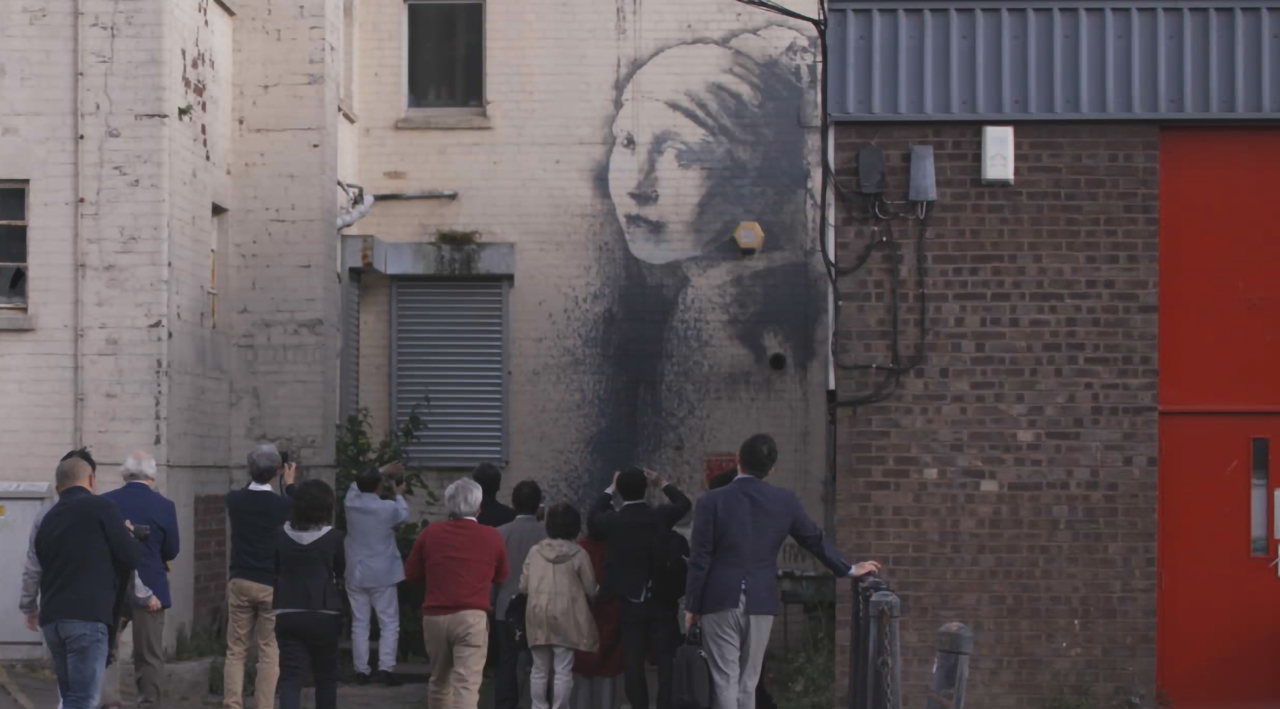Hablamos con los directores de BANKSY MOST WANTED, Aurélia Rouvier y Seamus Haley sobre la figura del elusivo artista.
Entrevista: Valeria Massimino
Fotos: Cross Borders Films y Scarlett Production
*Scroll down for english version
¿Cómo surgió la idea del documental?
Seamus: Aurélia tuvo la idea y escribió el guión solo después de lo cual solicitó mi participación.
Aurélia: Siempre me ha interesado la cuestión del anonimato en el arte. Me encanta la libertad que brinda al artista y sobre todo el espacio que deja para el espectador, que es libre de interpretar una obra, sin una biografía como una cuadrícula de lectura.
En el caso de Banksy, muchos de sus fanáticos, pero también comerciantes de arte, periodistas, se han apropiado de este espacio. Han reclamado su trabajo en la calle, ya sea emocional o legalmente. Se han identificado muy fuertemente con este artista sin rostro.
Estamos acostumbrados a ver íconos de la música o actores que mueven a las multitudes, pero con menos frecuencia artistas contemporáneos o artistas callejeros. Banksy ha logrado que la gente se sienta desinhibida, alegre frente al arte, y sus piezas son como sorpresas. A medida que pasa el tiempo, el anonimato se ha convertido en parte del juego de Banksy y su poder, y queríamos preguntar qué proyectan las personas sobre este «vacío» al que nuestra sociedad ya no está acostumbrada.
¿Cuál fue tu testimonio favorito?
Seamus: Lo que más me sorprendió cuando leí las entrevistas fue la forma en que nuestros oradores hablaron sobre Banksy, como si tuvieran una relación personal con él. De hecho, la mayoría de ellos no conocía su identidad. Se proyectaron sobre él donde se convierte en el portavoz de sus corazones.
Robin Barton se posiciona en oposición a Banksy en la sociedad, Will of Eastern Cowboy ve a Banksy como un legado de sus compromisos y asociaciones políticas del pasado, Dennis y Sean del Bristol Youth Club consideran a Banksy como un Robin Hood y serán leales a él. final.
Banksy es un superhéroe de cómic pero en la vida real.
Aurélia: Me conmovió mucho la historia de Dennis. Lleva más de 40 años dirigiendo un club de niños. El club estaba cerca de la bancarrota y una plantilla de Banksy apareció a pocos metros del club. Durante el tiroteo, al ver a Dennis con sus hijos, su amor y devoción por su club se hizo tan evidente que me di cuenta de que el club había sido salvado no por una plantilla, sino por él. Por su obstinación. Dennis ha logrado hacer que Banksy reaccione a su acción. Su fe ha tocado a Banksy, que normalmente no interfiere en este tipo de casos. Dennis ha provocado y revelado este lado de Robin Hood del personaje de Banksy. Es el ejemplo perfecto de alguien que ha invertido en el espacio dejado por el anonimato de Banksy y su tenacidad ha convertido una obra de arte en una muy buena historia, una historia social.

Otro de mis testimonios favoritos es el de Robin Barton. Es un comerciante de arte que disfruta representarse a sí mismo como el Sheriff de Nottingham, en comparación con Banksy el Robin Hood. Robin Barton atrae la ira de muchas personas que venden el trabajo callejero de Banksy. Pero detrás de su carácter provocativo, descubrimos a alguien apasionado y admirador de este artista, con argumentos muy sensibles para explicar su comportamiento. Barton vende el trabajo callejero de Banksy en nombre de los propietarios del edificio. ¿Qué harías si tuvieras una pieza de Banksy en tu pared, con un valor de una suma de seis cifras? Barton juega con este conflicto generado por el arte callejero, entre la propiedad intelectual y los derechos de los propietarios de edificios.
¿Intentaron entrevistar a Thierry Guetta?
No, no lo hicimos. Queríamos cuestionar la mitología en torno a Banksy, y por qué algunos quieren revelar su secreto, qué proyectan sobre él y por qué otros quieren mantenerlo enmascarado. Thierry Guetta no es parte de la gente en general, es un «actor» del documental de Banksy. Entrevistar a Thierry Guetta hubiera sido equivalente a cuestionar una obra de arte de Banksy. No es la dirección que queríamos para esta película.
¿Cómo es posible que nadie conozca la verdadera identidad de Banksy?
Seamus: Solo unas pocas personas conocen la verdadera identidad de Banksy. ¿De qué otra forma podría arreglárselas?
Dirigió Exit Through the Gift Shop, que fue seleccionado para los Oscar, hay contratos que se han firmado, algunas de sus instalaciones requieren colaboradores como Sirens of the Lambs o Dismaland. Lo que une a todas estas personas es la cultura del secreto en torno al artista. Robin Barton nos explicó que había sido excluido de un «grupo de amigos», cercano a Damien Hirst, cuando Banksy comenzó a codearse con ellos. No era parte de los «pocos felices».
Aurélia: Fuera del círculo íntimo de Banksy, hay personas que saben quién es Banksy, pero no quieren decirlo, ya sea porque es más lucrativo para ellos que Banksy permanezca en el anonimato, ya sea por respeto a su elección personal, o porque no lo saben. No quiero romper la magia de las personas. Robin Barton habla de una «amnesia colectiva», y creo que es cierto. La gente realmente no quiere saber quién es Banksy.
Entonces, ¿para ustedes quién es Banksy?
Seamus: Es alguien que está enojado y, como voz en el mundo de la publicidad, quiere denunciar nuestra sociedad superficial del espectáculo.
Aurélia: El es alguien quien probablemente se divierte mucho con nuestras reacciones. Banksy hace algo y luego solo tiene que menospreciar lo que está sucediendo. Y cuando se trata de él, suceden muchas cosas. Pero cuando pienso en él, me imagino también a alguien cuyo anonimato lo hace libre y prisionero: ¿cómo y cuándo confiar en las personas? ¿Es seguro aparecer en la imagen cuando sus seres queridos sacan una cámara? ¿El anonimato te vuelve paranoico? Hoy en día es muy difícil permanecer en el anonimato, y supongo que la libertad del artista afecta la del hombre.

¿Crees que habrá una segunda parte?
No, es una historia de un acto, incluso si el mito de Banksy continúa, y si siguen surgiendo nuevas teorías sobre su identidad.
¿Tu documental favorito?
Seamus: Me gusta Exit Through the Gift Shop, pero no es mi documental favorito. Uno de los que más me inspiró es probablemente Dark Days de Marc Singer, lanzado en 2000. Es una película sobre una comunidad de personas sin hogar que vive y muere en los túneles del metro de Nueva York y lucha por salir. El ambiente es muy oscuro y brutal; transcribe perfectamente la del nuevo milenio 2000 con el advenimiento del hip hop y el graffiti.
También es el año en que cumplí veinte años: fue en este momento cuando comencé a tener una conciencia política, a querer hacer películas, especialmente con mis amigos de skateboard. La calle era nuestro espacio. Fue durante este período que Banksy habría comenzado a ser escuchado, denunciando ciertas injusticias.
Dark Days comienza con una vista subjetiva de las vías del tren, iluminada por la linterna, descubriendo gradualmente este mundo subterráneo. Con Aurélia, utilizamos esta técnica que coloca al espectador en el lugar del protagonista.
Aurélia: Realmente me gustó Finding Vivian Maier, de John Maloof y Charlie Siskel. Buscando fotografías antiguas, Maloof compra una caja llena de viejos negativos en una casa de subastas y descubre dentro de los negativos que había sido tomada por un fotógrafo desconocido, Vivian Maier. El documental narra su búsqueda para descubrir a la difunta mujer que se esconde detrás de estas imágenes. Traza su vida desde Nueva York a Francia hasta Chicago. Vivian Maier era una niñera y nunca había exhibido en su vida. Pero gracias a este documental, ahora es reconocida como un importante fotógrafo callejero estadounidense.
Nuevamente, es una historia sobre una artista sin rostro y sin historia que se esconde detrás de su trabajo; Una historia de mujeres que se cuenta a través de los recuerdos de las personas que la conocieron, con la incertidumbre y la fantasía asociadas. Los recuerdos se mezclan y confrontan al espectador con la habilidad de Maier como fotógrafa y con su lado oscuro. ¡Realmente me encantó!
¿Qué sigue para el documental? Streaming, festivales, etc.
El documental se transmitirá en los próximos meses en Francia, en Canal Plus, y ya se confirman las proyecciones de festivales adicionales.

*English version
How did the idea for the documentary come about?
Seamus: Aurélia had the idea and wrote the script only after which she solicited my participation.
Aurélia: I have always been interested in the question of anonymity in art. I love the freedom it provides to the artist and mostly the space it leaves for the viewer – who is free to interpret a work, without a biography as a reading grid.
In the case of Banksy, a lot of his fans, but also art dealers, journalists, have appropriated this space. They have claimed his street work – either emotionally or legally. They have identified very strongly with this faceless artist.
We are used to seeing music icons or actors move the crowds, but less frequently contemporary artists or street artists. Banksy has managed to make people feel uninhibited, joyful in front of art, and his pieces are like surprises. As time goes, anonymity has became part of Banksy’s game and his power, and we wanted to question what people project on this “emptiness» to which our society is not accustomed anymore.
What was your favorite testimony? (any anecdote? something that caught your attention while documenting?)
Seamus: What struck me the most when I read the interviews was the way our speakers talked about Banksy – as if they had a personal relationship with him. In fact, the majority of them did not know his identity. They projected themselves onto him where he becomes the spokesperson of their hearts.
Robin Barton positions himself in opposition to Banksy in society, Will of Eastern Cowboy sees Banksy as a legacy of his past political commitments and associations, Dennis and Sean from the Bristol Youth Club regard Banksy as a Robin Hood and will be loyal to him to the end.
Banksy is a comic book super-hero but in real life.
Aurélia: I have been very moved by Dennis’s story. He has been running a boy’s club for more than 40 years. The club was close to bankrupcy and a Banksy stencil appeared a few meters from the club. During the shooting, seeing Dennis with his boys, his love and devotion for his club became so evident that I realised the club had been saved not by a stencil, but by him. Because of his obstinacy. Dennis has managed to make Banksy react to his action. His faith has touched Banksy, who normally does not interfere in these kinds of cases. Dennis has provoked and revealed this Robin Hood side of Banksy’s character. He is the perfect example of someone who has invested in the space left by Banksy’s anonymity and his tenacity has made a work of art into a very good story, a social one.
Another of my favorite testimonies is the one from Robin Barton. He is an art dealer who enjoys depicting himself as the Sheriff of Nottingham, compared to Banksy the Robin Hood. Robin Barton attracts the anger of a lot of people selling Banksy’s street work. But behind his provocative character, we discovered someone passionate and admiring about this artist, with very sensitive arguments to explain his behaviour. Barton sells Banksy’s street work on behalf of the building owners. What would you do if you had a Banksy piece on your wall, with a value of a six figure sum? Barton plays on this conflict raised by street art, between the intellectual property and the building owners’ rights.
Do you try to interview Thierry Guetta?
No, we didn’t. We wanted to question the mythology around Banksy, and why some want to unveil his secrecy, what they project on him, and why others want to keep him masked. Thierry Guetta is not part of general people, he is an “actor» of Banksy’s documentary. Interviewing Thierry Guetta would have been equivalent to questioning a Banksy work of art. It is not the direction we wanted for this flim.
How is it possible that no one knows Banksy’s true identity?
Seamus: There are only a few people who know Banksy’s true identity. How else could he manage?
He directed Exit Through the Gift Shop, which was selected for the Oscars, there are contracts that have been signed, some of his installations require collaborators such as Sirens of the Lambs or Dismaland. What unites all these people is the culture of secrecy around the artist. Robin Barton explained to us that he had been excluded from a «group of friends», close to Damien Hirst, when Banksy began rubbing shoulders with them. He wasn’t part of the «happy few”.
Aurélia: Outside Banksy’s inner circle, there are people who know who Banksy is, but they don’t want to tell, either because it is more lucrative for them that Banksy remains anonymous, either out of respect for his personal choice, either because they don’t want to break the magic for people. Robin Barton talks about a «collective amnesia», and I think that is true. People don’t really want to hear who Banksy is.
So, for you who is Banksy?
Seamus: He is someone who is angry and as a voice in the world of publicity, he wants to denounce our superficial society of showmanship.
Aurélia: He is someone who probably has a lot of fun with our reactions. Banksy does something and then he just has to look down on what is happening. And when it is about him, a lot of things happen. But when I think of him, I imagine also someone whose anonymity makes him both free and a prisoner: how and when to trust people? Is it safe to appear on the picture when your close ones take out a camera? Does anonymity make you paranoid? It is very challenging to remain anonymous nowadays, and I guess the freedom of the artist dents the one of the man.
Do you think there will be a second part?
No, it’s a one act story, even if the Banksy myth goes on, and if new theories keep coming about his identity.
Your favorite documentary?
Seamus: I like Exit Through the Gift Shop, but it’s not my favorite documentary.
One of the ones that inspired me the most is probably Marc Singer’s Dark Days released in 2000. It’s a film about a homeless community living and dying in the tunnels of the New York City subway and fighting to get out. The atmosphere is very dark and brutal; it perfectly transcribes that of the new millennium 2000s with the advent of hip hop and graffiti.
It is also the year when I turned twenty – it was at this time that I began to have a political conscience, to want to make films, especially with my skate-boarding friends. The street was our space. It was during this period that Banksy would have begun to be heard, denouncing certain injustices.
Dark Days begins with a subjective view of the railway tracks, lit by the flashlight, gradually discovering this underground world. With Aurélia, we used this technique that puts the spectator in the place of the protagonist.
Aurélia: I really liked Finding Vivian Maier by John Maloof and Charlie Siskel. Looking for old photographs, Maloof buy a box full of old negatives in an auction house, and discovers inside negatives that had been taken by an unknown photographer, Vivian Maier. The documentary chronicles his quest to uncover the late woman who hides behind these pictures. He traces her life from New York to France to Chicago. Vivian Maier was a nanny and never had exhibited in her lifetime. But thanks to this documentary, she is now recognized as an important American street photographer.
Again, it is a story about a faceless and storyless artist who hides behind her work; a woman story who is told through the memories of people who knew her, with the associated incertainty and fantasy. The memories are mixed and confront the viewer with Maier’s skill as a photographer as well as with her dark side. I really loved it!
What’s next for the documentary? Streaming, Festivals, etc.
The documentary will be aired in the next few months in France, on Canal Plus, and further festivals screenings are already confirmed.
